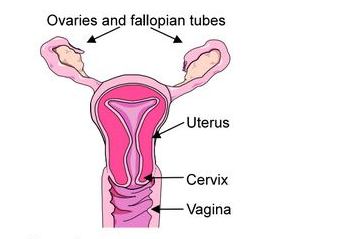A hysterectomy is the surgery to remove your uterus, or womb. During the operation, your cervix will normally be removed too. In addition, your ovaries may be taken out at the same time.
The main reasons some women decide to have a hysterectomy include fibroids, painful or heavy periods and ovarian cysts.

Why do I need a hysterectomy?
The most common reasons for requiring a hysterectomy include:
- Heavy or painful periods
- Fibroids (non-cancerous tumours that grow in or around the womb)
- Endometriosis (where the womb lining grows outside the womb)
- Ovarian cysts
What are the advantages of having the operation?
A hysterectomy may cure or improve your symptoms. You will no longer have periods.
Are there any alternatives to the operation?
A hysterectomy is a major operation that is only recommended after simpler options have failed. Alternatives include:
- Hormonal and non-hormonal oral medications to control heavy periods
- An IUD (intra-uterine device, also known as a coil) which can reduce heavy periods
- Endometrial ablation, where the lining of the womb is removed
- Medication to control fibroids, depending on their size and position
- Uterine artery embolisation, which blocks off the arteries which feed fibroids
What does the operation involve?
A laparoscopic hysterectomy is usually performed under a general anaesthetic. Occasionally a spinal anaesthetic will be used. The operation usually takes about an hour and a half. First, your gynaecologist will make several small cuts on your abdomen so they can insert an instrument which inflates the abdominal cavity with a carbon dioxide gas. This will help the surgeons get a better view. They will then insert a number of tubes (ports) into your abdomen, through which they will insert surgical instruments, along with a telescope (laparoscope). This will allow them to see inside your abdomen and perform the operation. Your gynaecologist may also need to place instruments through your vagina to help remove your womb. They will make a cut around your cervix at the top of your vagina so they can remove your womb and cervix.
How long will it take for me to recover?
You will usually be able to go home after one to three days. You will need to rest for two weeks and continue to do the exercises that you were shown in hospital. Most women can go back to work after four to six weeks, depending on your type of work. Once you have gone home, you should be aware of symptoms that could be a sign of complications. You should contact your gynaecologist if you experience the following:
- Pain that get worse over time
- A heavy discharge or bleeding from your vagina
- A high temperature
- Dizziness, feeling faint or shortness of breath
- Feeling sick or lack of appetite
